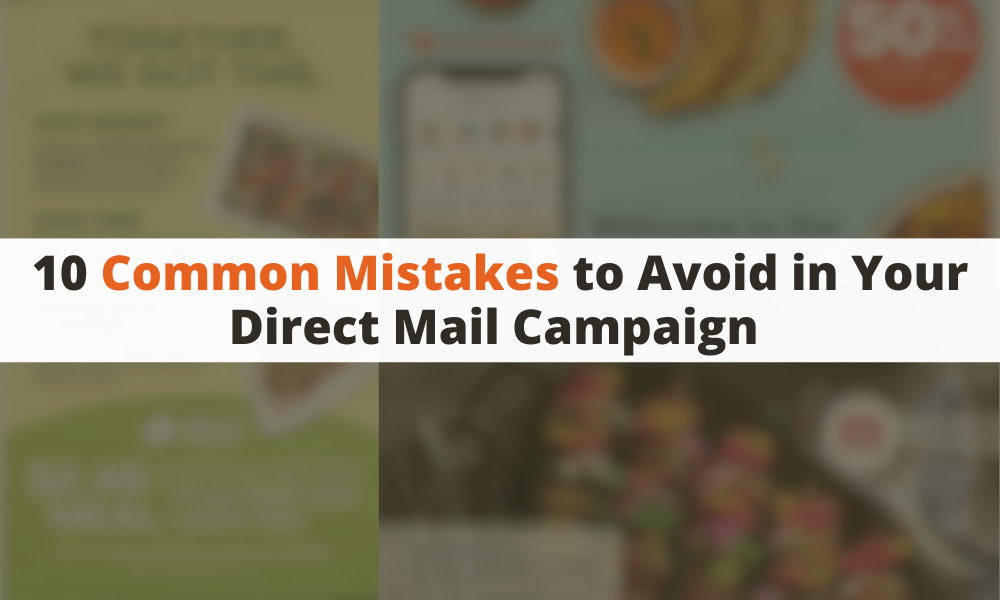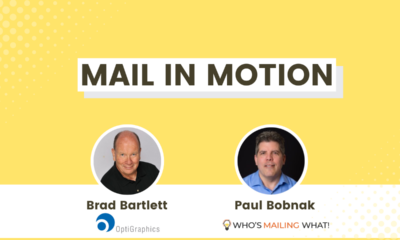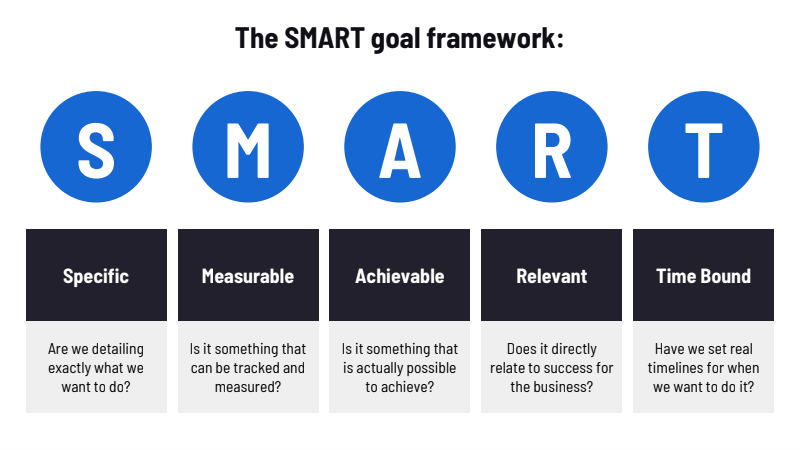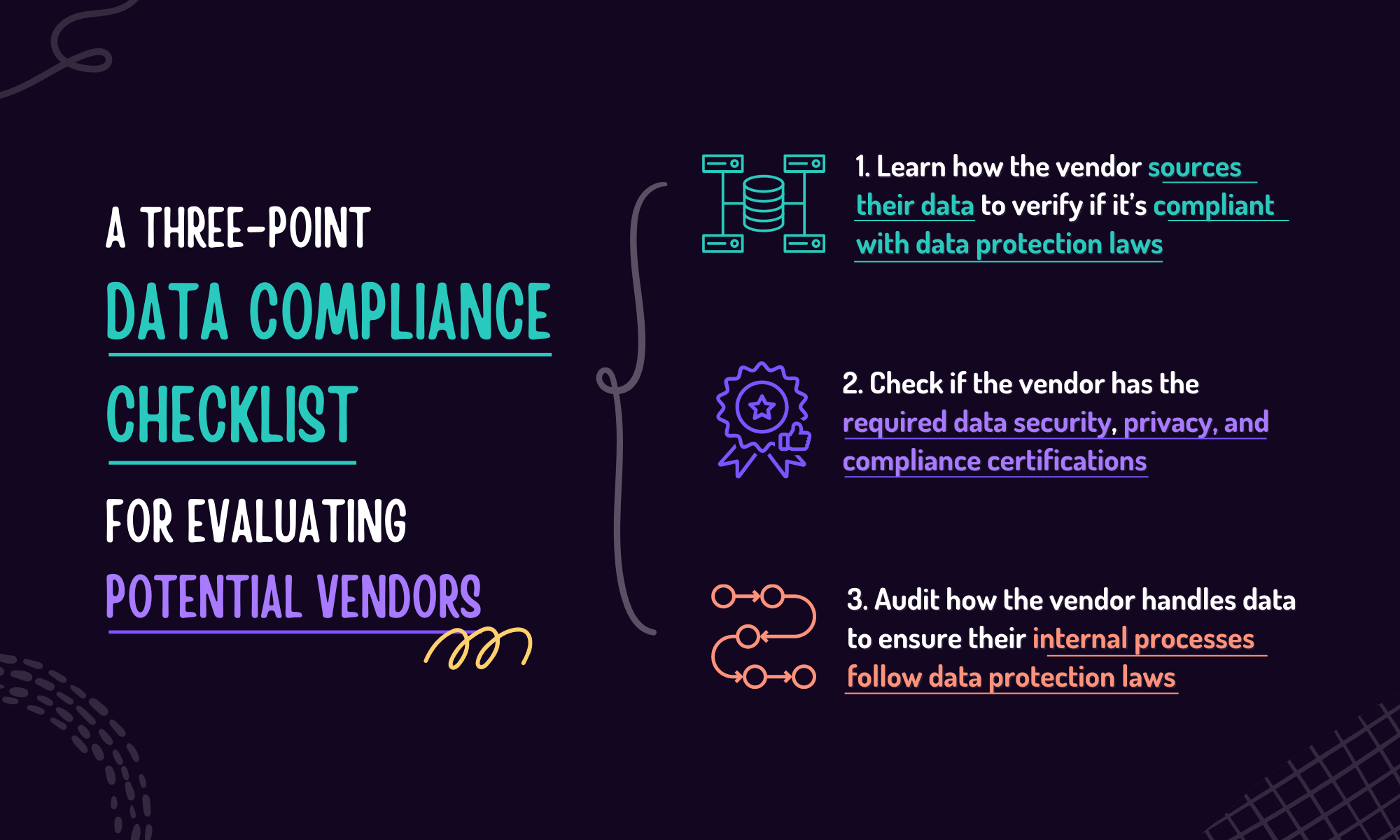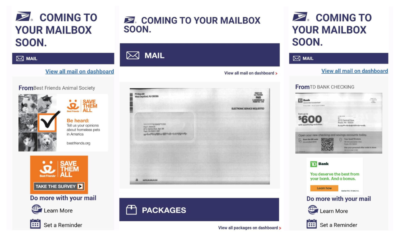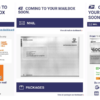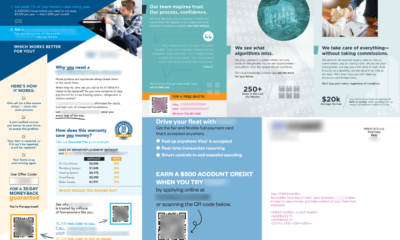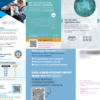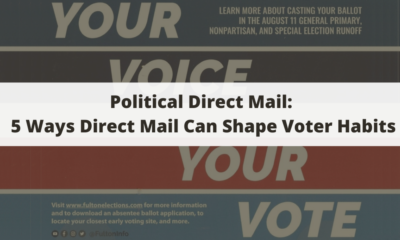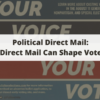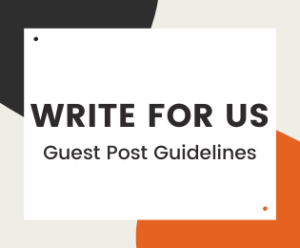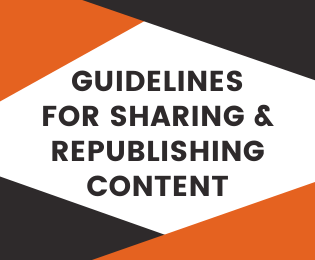TIPS & TRICKS
10 Common Mistakes to Avoid in Your Direct Mail Campaign
In this article, we explore some common issues to avoid when launching your direct mail campaign and how to ensure your message reaches your target audience effectively.
According to the United States Postal Service (USPS), 71% of Gen Z actually look forward to receiving daily or weekly mail. This statistic shows that direct mail campaigns are still valuable tool for reaching potential customers. However, launching a successful direct mail campaign requires careful planning and execution.
In this article, we will explore some common issues to avoid when launching your direct mail campaign and how to ensure your message reaches your target audience effectively.
10 Problems that Could Derail Your Direct Mail Campaign
Direct mail strategies can reduce client acquisition costs and increase user retention when used properly. But while devising your direct mail campaign, it is easy to fall victim to some of the pitfalls mentioned below.
1. Lacking Clarity About the Goals
Planning and strategizing form the core of a direct mail campaign. Before moving on to the execution, it is vital to answer some crucial questions regarding the goals of your campaign. Some of the possible questions include the following.
- Who is the target audience for my services?
- What are the pain points that would yield active engagement?
- What are the marketing KPIs for tracking the campaign’s duration?
- When should the campaign be paused or stopped?
A clear answer to queries like these will help you decide the scope and aim of your direct mailing efforts. Lack of planning might pose significant obstacles, such as overshooting the budget or delivering campaign mails to users outside your target demographics.
2. Focusing too much on the Product/Service Features
Your direct mail campaigns should be more audience-centric. The flyers and catalogs must focus more on the benefits of your products or services for the prospect. It should build on their pain points and convince them that your company can solve their problems or help them tap new markets.
When you showcase the benefits of your product or service, you avail of the following advantages:
- Appealing to the pain points and emotions of the prospects to convince them to purchase.
- Focusing more on the problem faced by prospects rather than using heavy technical language to describe the products or services.
- Increased degree of personalization and an opportunity to showcase your brand’s expertise.
For example, HelloFresh highlights 3 main benefits of using their service in this February 2023 postcard.

3. Going Too Broad
Segmentation is an integral aspect of your direct mailing campaigns. When you categorize your prospects into groups based on common denominations, you effectively chart a way for your marketing strategies to reach the relevant audience. This is also considered narrow marketing.
Here are some ways to segment your audience:
- Analyze client journey maps to assess their needs.
- Divide prospects according to common characteristics like demographics and geographical location for personalized campaigns.
- Identify buyer personas to send tailored messages.
The absence of effective categorization leads to erratic marketing campaigns filled with generic information. If you do not pinpoint your niche, your campaigns will witness poor response rates and not appeal specifically to a particular group.
Here is how SmileDirectClub uses images and offers to resonate with particular audiences.
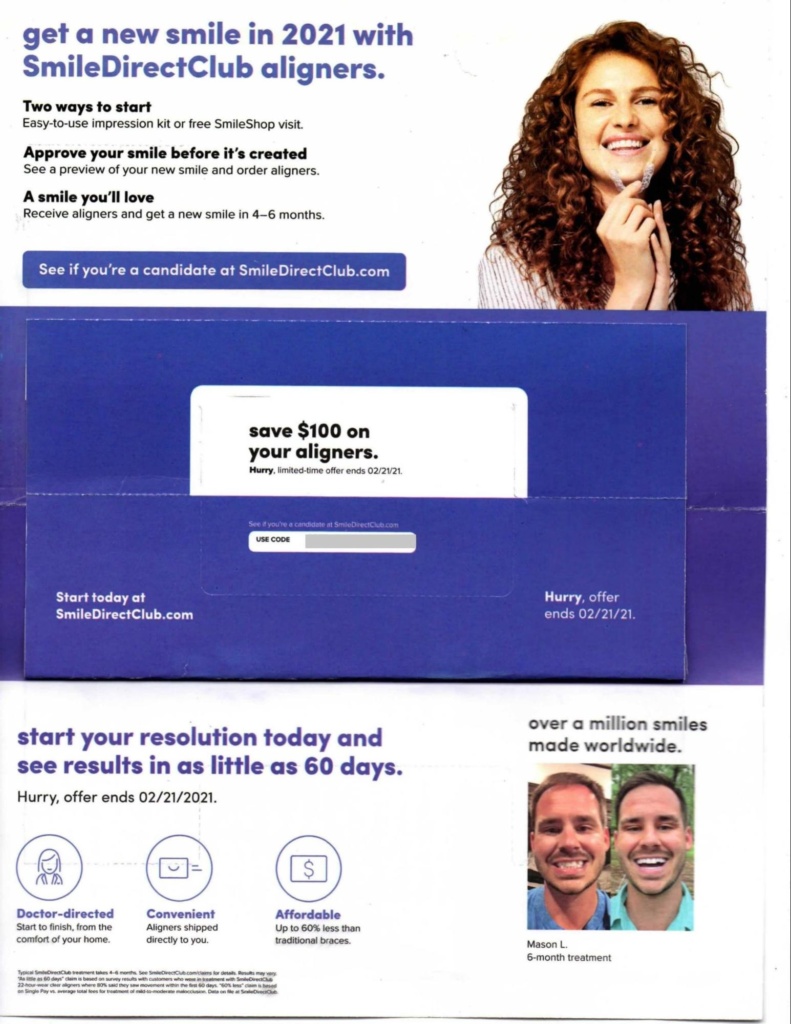
4. Curating a Mailing List with Outdated Data
A mailing list is an important prerequisite for a successful direct mail campaign. It comprises information about all your target prospects, including their names and address. However, a mailing list is only valuable if the information is authentic and validated.
As a general rule, it is vital to analyze your mailing database every three to six months. Some individuals may shift to a different business or change their address, meaning your direct mail campaigns will be sent to people outside your target audience. In turn, it will impact the response rates and increase the cost per acquisition.
You can build a high-quality mailing list using the following tips:
- Acquire a comprehensive mailing list from established data vendors.
- Use content marketing to acquire user data.
- Apply segmentation to group your prospects and optimize marketing resources.
A mailing list should also provide precise information about the prospects’ location, industry, and technographic for improved identification.
For instance, this October 2022 postcard from DoorDash welcomes new movers and offers them 50% discount on their first order.

5. Using Mediocre Creative Components
No matter how good your message is, if it is accompanied by crowded design elements, consumers might not be inclined to read through it. The solution is to lead with a catchy headline with neat graphic design elements to attract the audience’s attention and communicate your brand’s style.
Distinguish your direct mail campaigns with the following design tips:
- Determine the ideal size for the mail print according to the printed content.
- Choose complementary colors that add vibrance to the written matter.
- Take your time to pick out relevant images to convey your message.
- Carefully add white spaces to finish the look.
Think of your sales pieces as a story. The audience will be more inclined to sift through the entirety of your brochure or flier if they are hooked from the beginning. Motivating and compelling sales pieces also define your optimism and imprint the brand’s voice in the readers’ minds.
Here’s a good example of the combination of design and catchy headline (Meijer, August 2020 postcard).
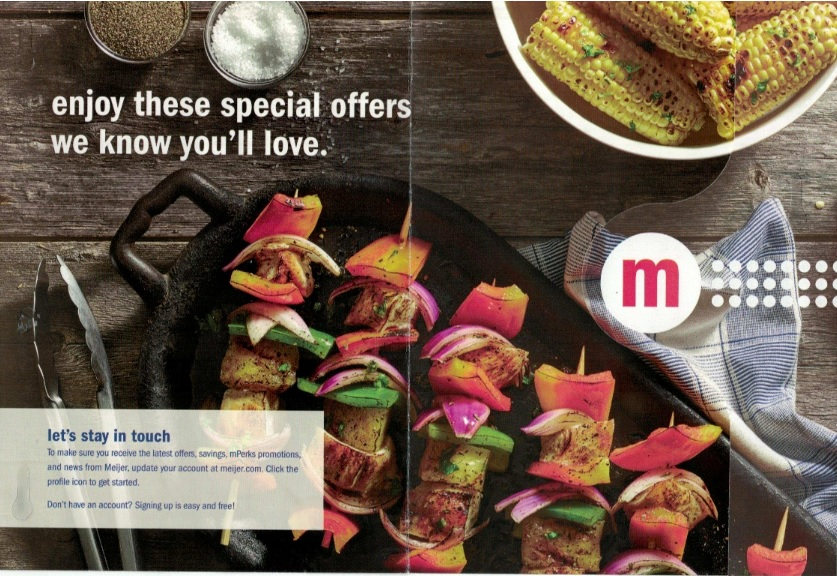
6. Including an Unnoticeable CTA
Your direct mail campaigns are incomplete without an impactful call-to-action that motivates the prospects to take the next step. Alter the design elements to provide a visible CTA and steal the user’s attention to the course of action after they finish reading your brochure.
Highlighting the CTA on your marketing fliers encourages a reaction from the audience and makes it easy for them to take the next step. Use actionable words like ‘call’ or ‘subscribe’ to clarify the next stage in the buyer’s journey and guide them into the marketing funnel.
Here is an example of using a clear CTA by Wayfair (February 2023 postcard).

7. Overlooking the Offer
Your goal is to make it as distinctive as possible with a compelling offer that convinces them to choose your services.
You can make a strong offer by using one or more of these methods:
- Ensure you offer a high-quality aspect that is not easily accessible, like free tools or a free e-book on a niche topic.
- Check that the offer complements your brand and is in line with your offerings. This establishes your expertise and compels prospects to seek your services.
- Account for the target audience’s buying stage and tailor the offer according to their needs.
For example, Alaskan Airlines place their offer right on the envelope.
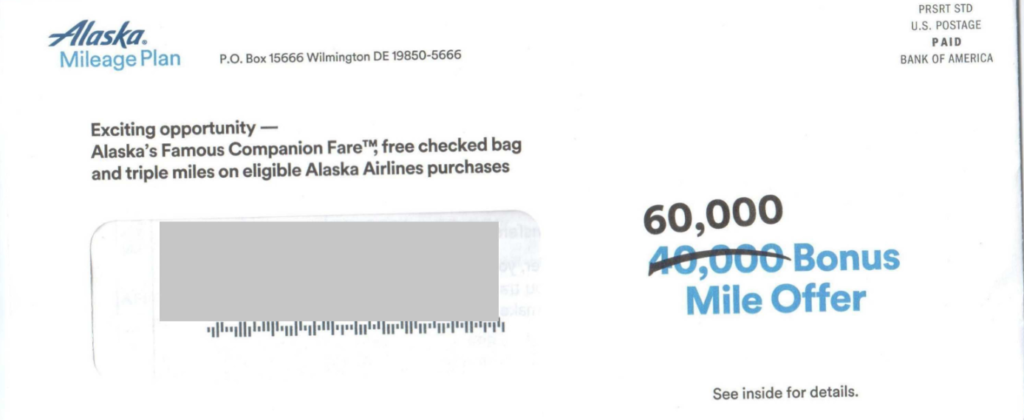
8. Neglecting Testing and Tracking
Before sending your mail campaigns to the target audience, it is vital to use a test mailer to check if all elements are performing as expected. Testing and tracking are also reliable for determining the impact of a particular mailing format, like fliers or brochures.
Sending test mails can help you ascertain anomalies in your direct marketing efforts. You can weed out the major problems before creating a final draft for your prospects, whether it is a typo or shabbily arranged design elements.
9. Ignoring the Quality of Copywriting
The choice of words used in your content can often make or break your direct marketing efforts. The audience is more likely to respond positively if they notice actionable and optimistic words that capture your brand’s persona and convey the point in a language that is easy to understand.
To better capture the attention of the audience, here are a few copywriting tips:
- Avoid exaggeration and keep it simple.
- Prefer using active voice over passive voice.
- Keep the tone conversational so that the content resonates with the audience.
- Convey your points in short and crisp sentences.
Using the AIDA model is good practice when it comes to creating a direct response copy. Below is an example of leveraging this formula by Wayfair.

10. Disregarding Legal Complications
You must keep track of the stringent data privacy laws in several countries to avoid legal ramifications during your direct mail campaigns. Non-adherence to these laws can result in heavy fines or criminal proceedings lasting several years. To avoid legal hassles, make sure of the following:
- The data acquired is sourced from legal and fair sources.
- You must communicate the need for personal data explicitly and avoid using it for other purposes.
- Obtain consent from the individual before using their personal information.
Summing Up
Direct mailing campaigns are synonymous with a personal touch that may not be found in email or social media marketing. It helps you engage with the prospects personally and customize your offerings according to their pain points.
As long as you stay aware of all the pitfalls that can affect your campaigns, you can amplify your client base and drive engagement from your audience across the world. So, build a direct mail campaign for your brand and witness soaring ROI with a well-defined strategy!
 Written by Clara Beck
Written by Clara Beck
Clara Beck is a Business Manager with 12 years of experience at Thomson Data based in Plano, Texas. She helps SMBs and Enterprise firms take full advantage of the latest marketing tools to scale up their business. She blogs about Small businesses, Marketing, CX, Entrepreneurship, Big Data, and other technological innovations. Connect with Clara on LinkedIn to learn how to win more leads.







